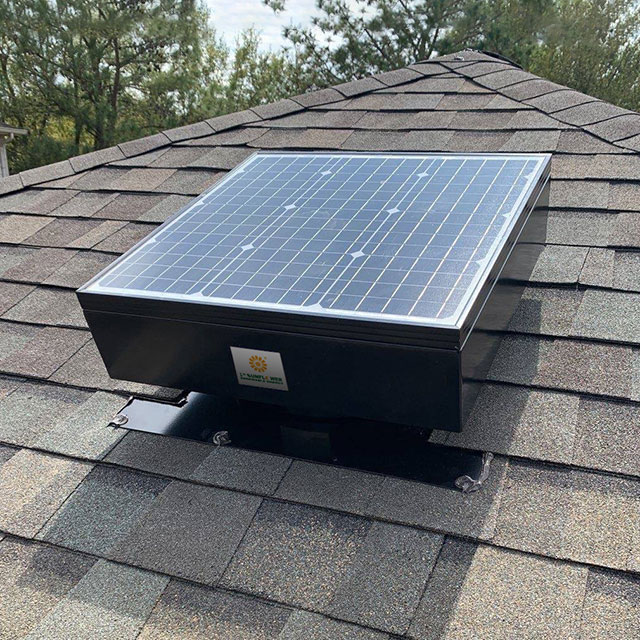Views: 18 Author: Site Editor Publish Time: 2021-05-18 Origin: Site

Adding a solar attic fan to your house can protect the house from seasonal damage. Moreover, it can provide a moderate energy saving effect. Wiring to the attic can be painful, and solar energy can simplify the problem. Depending on your city, you may also be eligible for additional tax credits. In this guide, we will discuss the importance of a well-ventilated attic. And what to look for when choosing a solar attic fan.
Keep Cool
In summer, the attic air becomes very hot because the shingles absorb the heat of the sun. This overheated air may damage the roof tiles by cooking from below. Attic fans combined with proper soffit ventilation can reduce heat and moisture in the attic and prevent damage. In winter, this moisture can cause condensation, potentially damaging attic materials or causing mold to grow.
Ice Damming
In snowy weather, proper attic ventilation is essential to prevent ice accumulation. When the melt water from the snow on the warm roof gathers in the gutters and eaves, an ice dam is formed. The water refreezes and the process continues until the melted water has nowhere to go and accumulates on your roof. If water starts to leak from the roof, this may damage your house.
Soffit and Gable Ventilation
Proper soffit or gable ventilation is required to prevent pressure differences from accumulating in the attic. In summer, fans push hot air out of gable vents or roof vents. The relatively cool air from the outside is sucked into the attic through the soffit or gable vent.
This air flow cools the attic temperature and protects the shingles from damage. The process is the same in winter. The goal is to maintain a uniform temperature with the outside world to prevent melting snow on the roof from causing ice dams.
Insulation
If your attic is not properly insulated, you should invest in it before installing any kind of attic ventilation. Proper insulation measures can prevent heat transfer between the attic air and the conditioned air inside the house. Improper insulation combined with attic fans can cause energy loss in summer and winter.
Types of Fan
There are two main types of attic fans to choose from. The roof fan is installed on a flat and sloping roof. These fans are installed in circular holes in the roof. If you lack the necessary carpentry skills, you may need an expert installation. Fans installed on gables are usually placed behind existing gable vents. If you don't have ventilation holes, installation will be more difficult.
Size of Fan
Most lofts are the same size as your residence. Multiplying the square feet of the house by 0.7 will make the smallest cubic feet of air that the fan can move per minute. A steep roof will increase the volume of the inner attic. A dark roof increases the energy absorption of the sun. Both cases will require fans that can move more air.
No Electricity Required
Without basic electrical knowledge, installing wiring in the attic requires a professional electrician. Compared with wired fans, the obvious advantage of solar fans is their simplicity. The gable fan can be installed behind the existing vent. In addition, the roof-mounted type can be easily installed with a little carpentry.
Adjustable Solar Panel
Adjustable solar panels will allow you to move the device to a position aligned with the sun. This is important because your solar fan can only run in direct sunlight. The placement location is important to ensure that the fan runs throughout the day and provides the expected benefits.
Construction Quality
The construction of solar roof fans must use durable materials. The fan will be exposed to ultraviolet radiation, rain, hail, and depending on your residence, snow, tornado and hurricane.
The durability of the fan housing is very important. It includes a high-quality screen that prevents rodents, birds and insects from entering through the ventilation holes. The thermostat may also be a useful feature. The thermostat turns the fan on and off according to the ambient temperature, thereby extending the life of the fan motor.
Installation
Installing a solar loft fan is a moderately difficult project. If the plan is reasonable, a few hours of sweating in the attic should be able to get the job done. In many houses, the height between the subs is 14.5 inches, which can make room for fans.
Make sure not to cut or damage any rafters during installation, as this will damage the structural integrity of the roof. If you are not sure about any aspect of the installation, please read the instructions carefully and consult a professional.